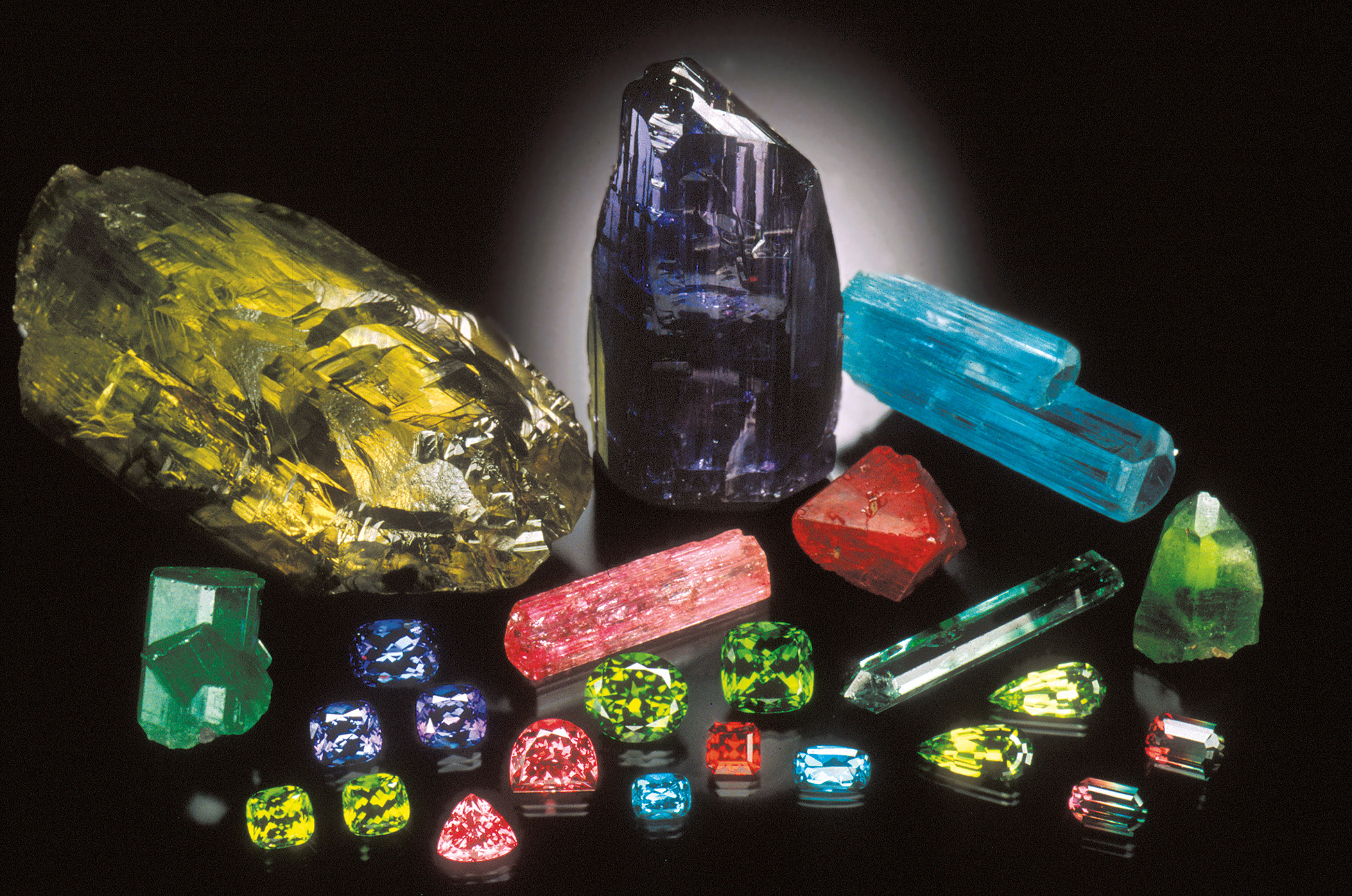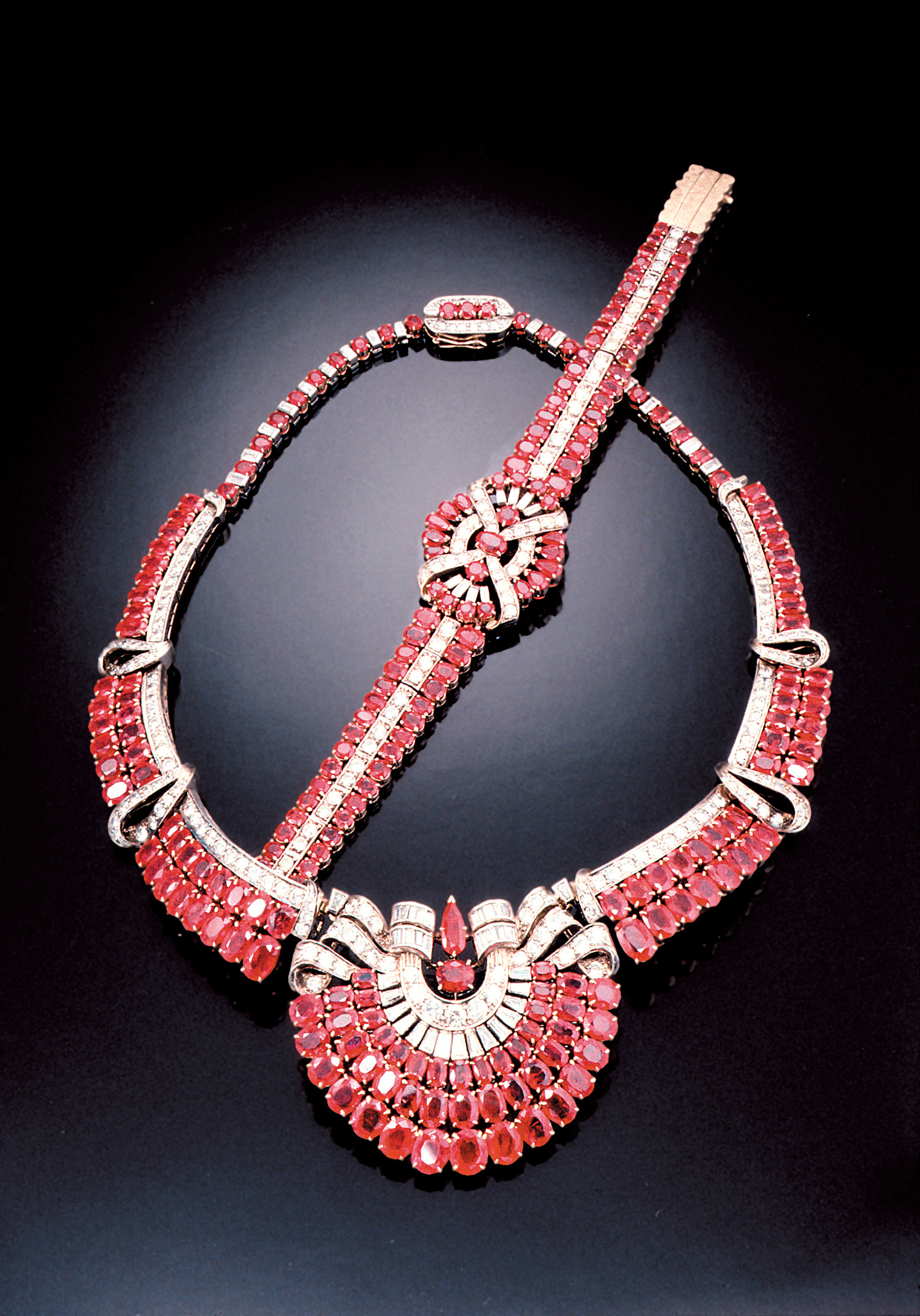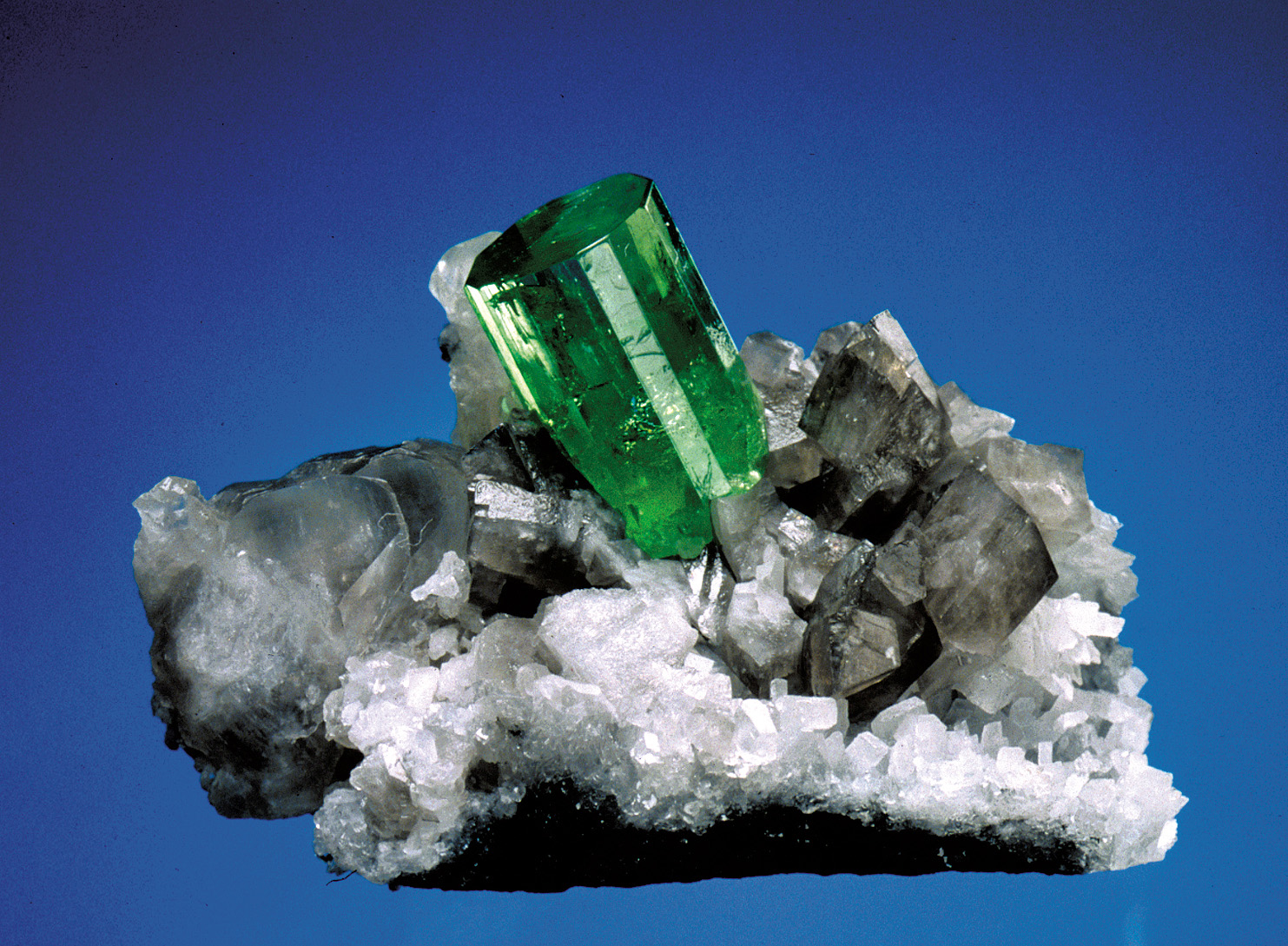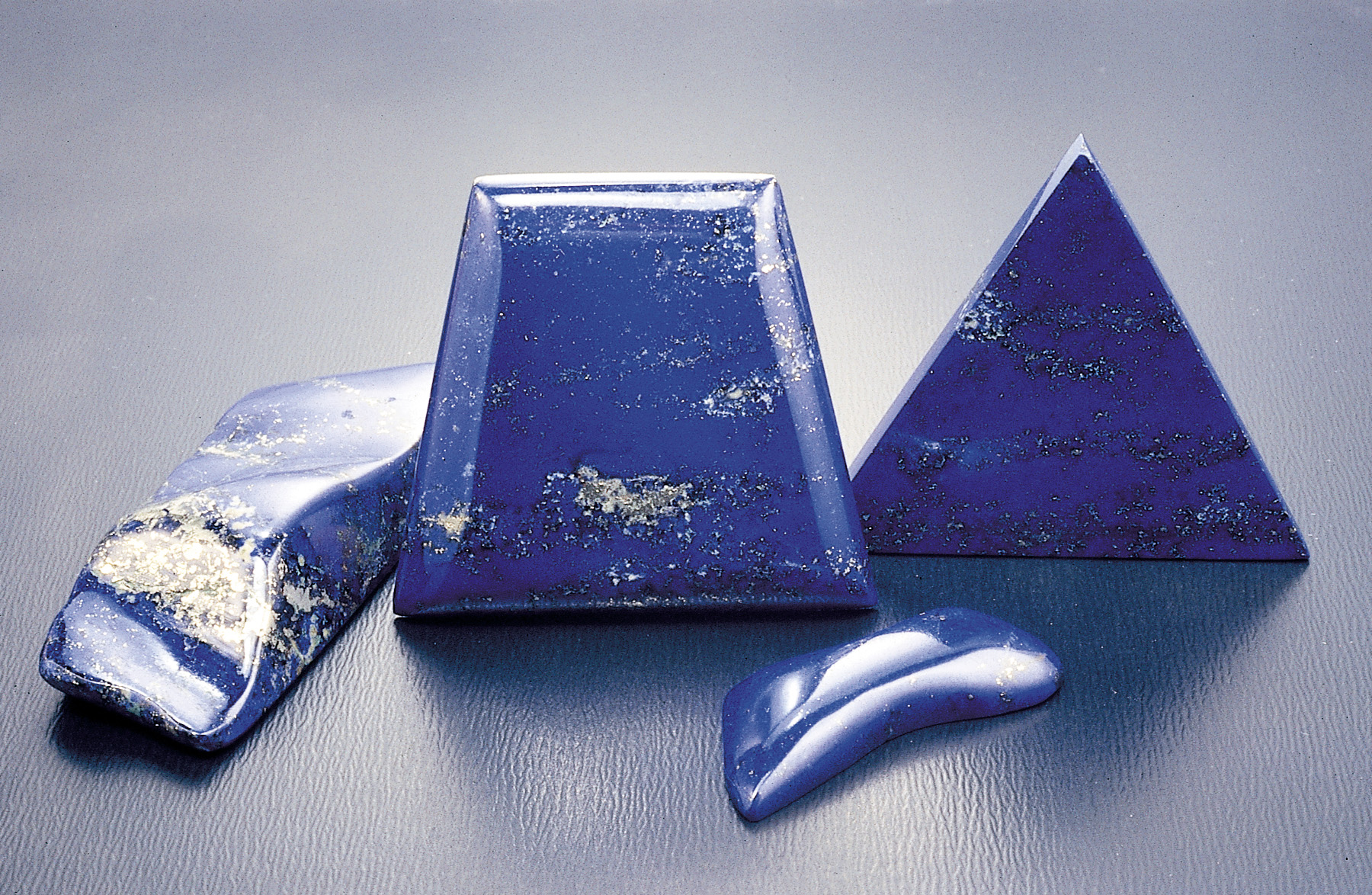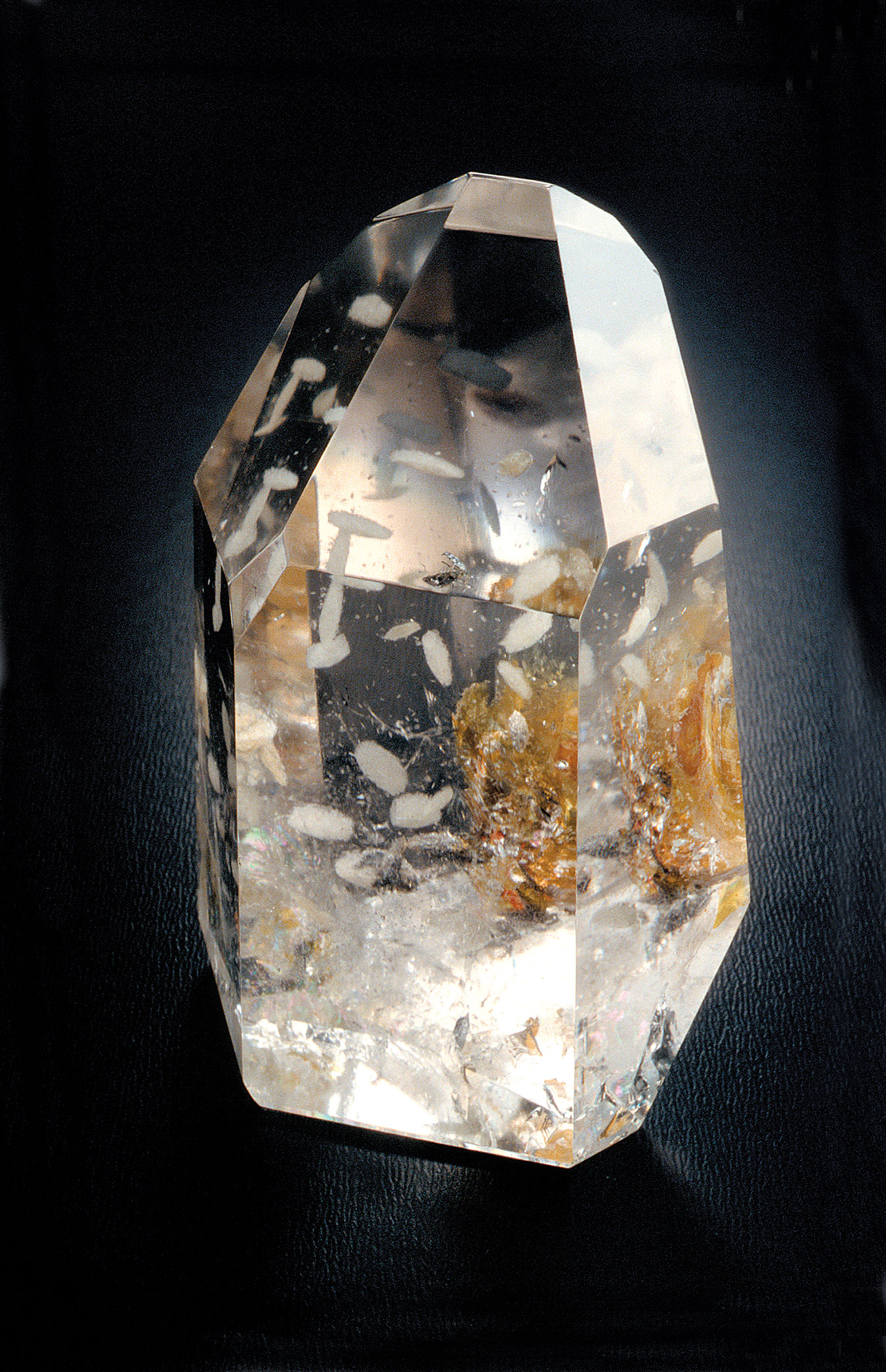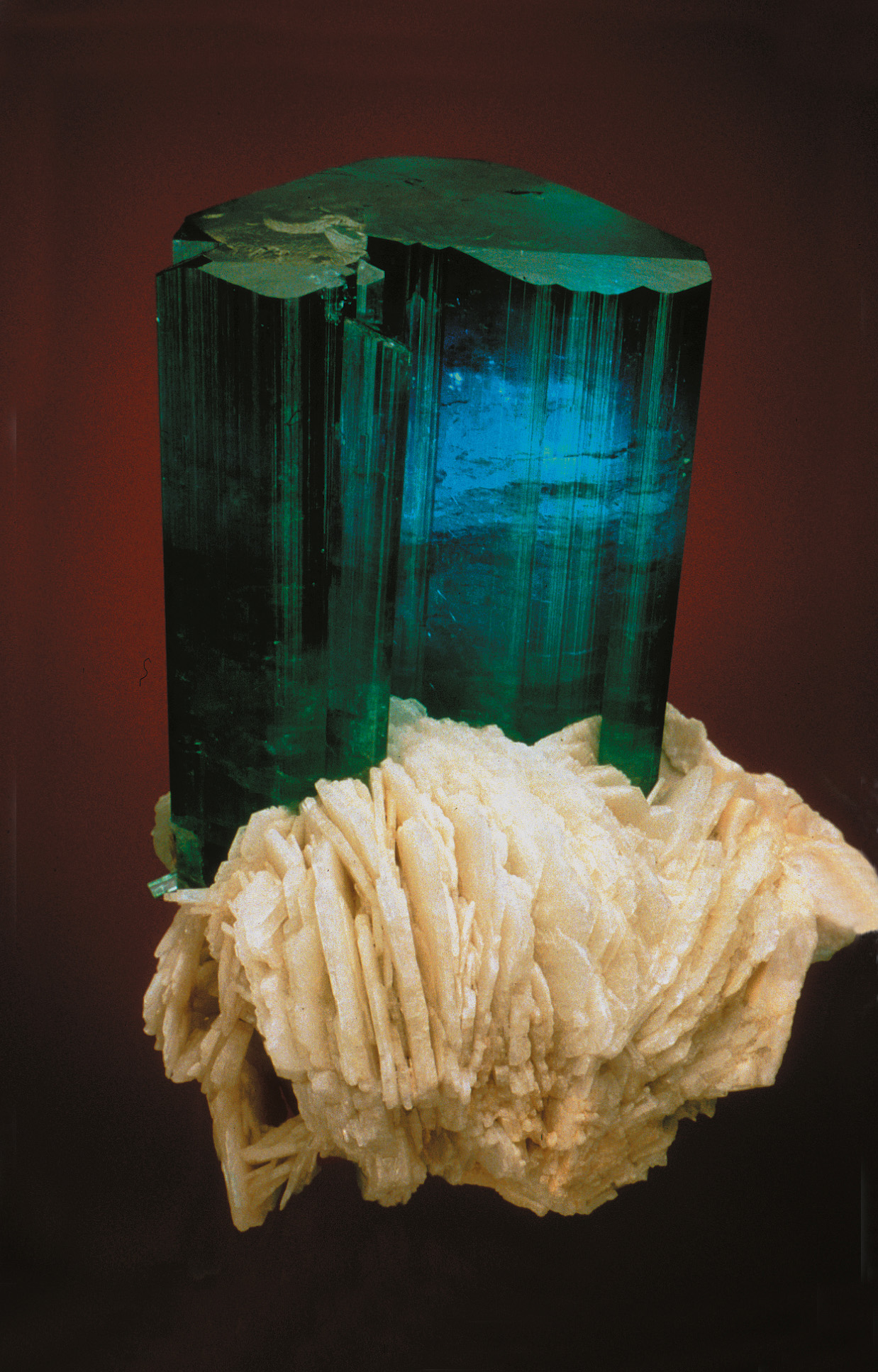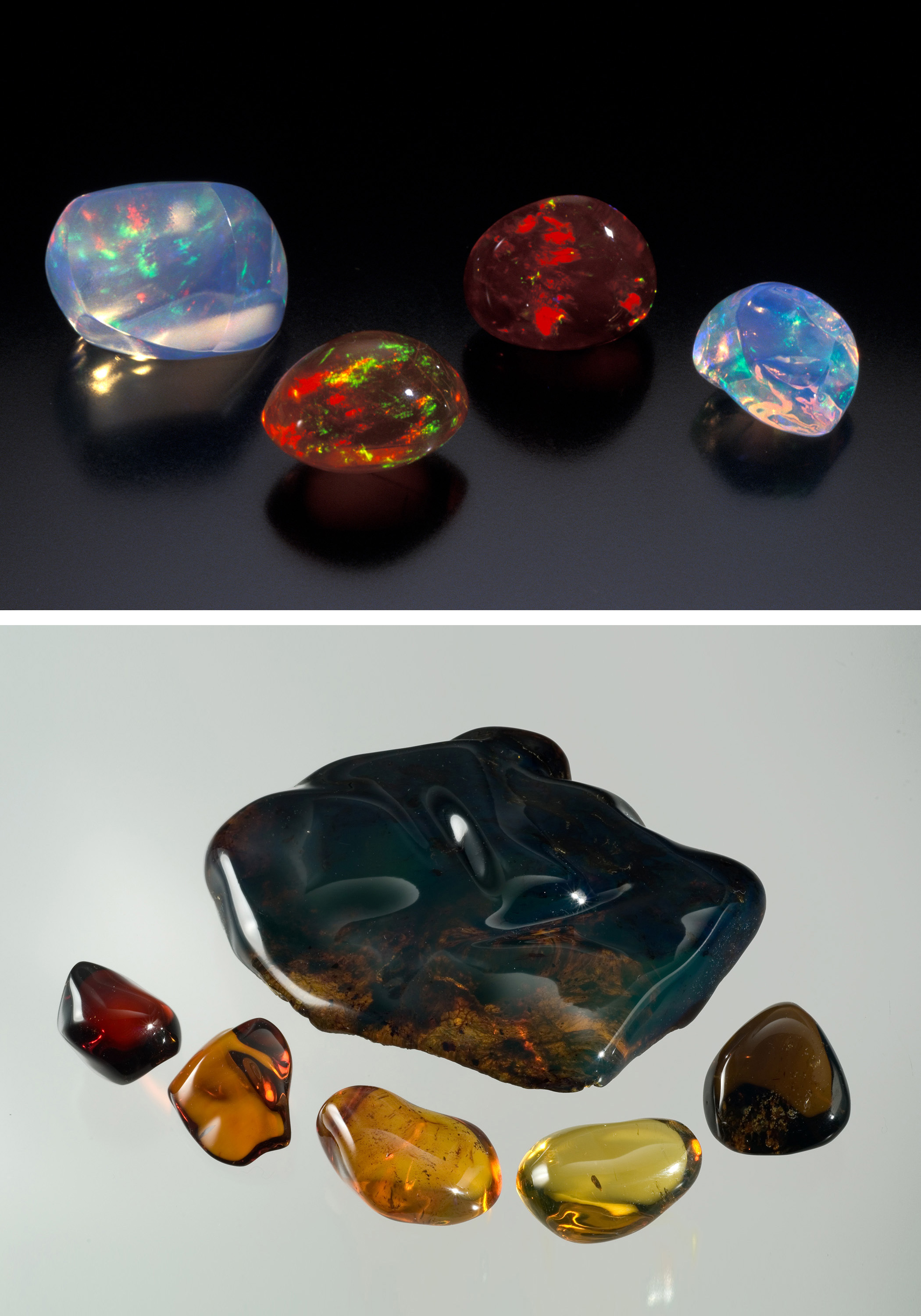All gems—inorganic and organic—are made up of atoms. Atoms are the basic structural units of matter and the smallest units that retain the characteristics of a chemical element. Chemical elements consist of only one kind of atom, and combinations of them make up and color gems. Chromium atoms, for example, color ruby red, and aluminum and oxygen atoms build its crystals.
The kinds and relative quantities of atoms that make up a material comprise its chemical composition. Each gem has its own unique chemical composition. Emerald, for example, is a precise combination of beryllium, silicon, aluminum, and oxygen atoms.
Knowing about the atoms and their arrangement within a gem will help you understand its physical properties, right down to the sharpness of its facets and the perfection of its polish. The types of atoms a gem contains and how they’re combined determine everything you see when you look at a gem and how it feels when you handle it.
Almost all the gems used in jewelry are minerals. Minerals are natural, inorganic substances with characteristic chemical composition and—usually—characteristic structure, too. Synthetic gem materials aren’t minerals because they’re grown in a laboratory rather than in the earth.
While most gems are minerals, very few minerals qualify as gems. To be a gem, a mineral must be beautiful, durable, and rare. These three factors are what make a gem desirable. Of the more than 3,000 minerals discovered so far, only about 100 qualify as gems.
Some gems are rocks, which means they’re made up of masses of mineral crystals. Some rocks, like marble, are composed of crystals of a single mineral, but most contain more than one kind. An example is lapis lazuli, which is made up of the minerals lazulite, calcite, and pyrite.
Many of the most common minerals—the main components of the rocks near the earth’s surface—are silicates, which simply means they contain the elements silicon and oxygen. Most quartz gems are composed almost solely of silicon and oxygen. That’s why the term silica is sometimes used to describe quartz. The list of gems that are silicates also includes beryl, garnet, tourmaline, jadeite, spodumene, and opal.
Minerals almost always form as crystals. A crystal is solid matter with atoms arranged in a regular, repeating, three-dimensional pattern called crystal structure, or crystal lattice. A crystal can be natural or manmade.
Most transparent gems are cut from one large crystal. Other gems—like turquoise—are made up of many tiny crystals that might not be visible to the unaided eye. Still others, like lapis lazuli, are made up of mixtures of different mineral crystals.
Many rocks are intergrowths of clearly visible mineral crystals. Architects choose granite for the facades of many buildings because of the decorative effect of its different-colored interlocking crystals.
While the majority of colored stones are crystals, there are some important exceptions. Fire opal appears to have the same transparency as many other gems, but it lacks a regular, repeating crystal structure. Gemologists describe gems without a regular crystal structure as amorphous. Amber is another amorphous gem material.
